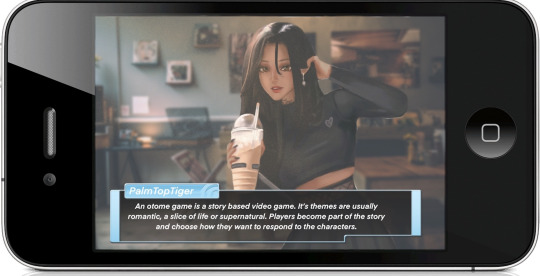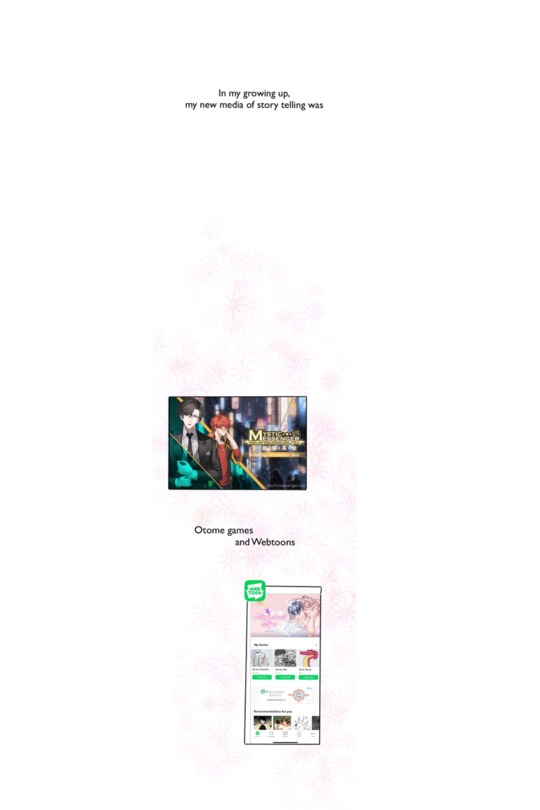Text
Welcome to my TLA! Since so much of my story has to do with Tumblr, I thought I should bring the essay here.
If images appear too small to read, click to enlarge.
My final image and paragraph are actually a separate post, so be sure to scroll to the bottom of the page to see my entire project.
My cited sources are located in the navigation drop box.
If anything isn't working I have a copy of this in google docs I can send over.
Pages: 6.
0 notes
Text
As a preteen, I could devor an entire novel in one night. Entering fictional worlds became a hobby of mine. I’d spend entire study hall periods browsing book after book, searching for the perfect world to get lost in. Eventually, when my small school library had little left to offer me, I turned to the internet for guidance. In 2013 the place to be for a young book lover was Tumblr. The blogging website any teen internet dweller could be found on. It was amazing. I was able to read people’s reviews, fanfictions, see their fanart and fancasts. People would curate playlists specifically for reading a certain book, timing each song to play at the perfect moment in the book. My timeline was a masterpiece of aesethically type-writer style quotes from John Green novels, images of books perfectly placed on a table with tea and toast. It was my favorite place to be, until Tumblr had given so much that the books became boring. I found more enjoyment in the aftermath, seeing what others did with some creativity and a shared admiration for a story and it’s characters.
This fallout between the novels and I, set my preteen self on an expidition to find a new hobby. To better understand the pipeline I fall into, I should explain the inerworkings of subcultures on the internet in the 2010s. Everyone (at this time) has Facebook, Snapchat, Instagram, Kik, Ask.fm, and maybe Twitter. These are the apps/sites you use to interact with friends from school and family members. These are the “normie” sites. If you have any hobby or interest that deviates from what a typical middle schooler considers cool, you most definitely have a burner account on each app. Popular subcultures worth hiding from normies in 2013 were: Anime/Otaku, Staning/Fangirling, Furries, Bookworms and more. It was common to make an account dedicated to one of these subcultures, where you can remain anonymous by using a nickname and never showing your face. Instead of friending people you know in real life, you can accumulate mutuals by following anyone who shares your interests. This allows an individual the space to indulge in their favorite outcast activities without the scrutiny of their peers. Anyone who occupies space in one subculture tends to learn a bit about the others over time, whereas normies may go years without learning of some things. This makes it easy for one’s interests to shift.
Thirteen year old me grew bored of hobbies rather quickly, and pretty soon novels and the bookworms of Tumblr no longer satiated my hunger for something immersive. Through my ventures on Tumblr, I was particularly intrigued by video games. Gottschall calls attention to this phenomenon I took part in: “video games–and other digital entertainments–are also on the rise, drawing audiences away from traditional story. The gaming industry is now much bigger than the book industry” (178). He’s called me out entirely, I am one of the children who abandoned her books for video games. I believe it is incredibly human to want to try out the new, exciting media that is just a few clicks or taps away. The mounds of books will remain in my bedroom, and I will return to them from time to time but for now I’ve accepted the fate of being a new media consumer. As eager as I was, my family’s income did not allow for a gaming console or proper gaming laptop unless I did some serious begging around Christmas time. But, as the internet always does, I was offered an alternative: otome mobile games.

These games felt close to how reading a novel feels. Most of the gameplay is spent reading, whether that be through speech bubbles or blurbs that describe action scenes. Throughout the story, I get to choose responses with the character I create. This encapsulates the main storymode. Outside of this part of the game there are usually mini-games, where you can interact with your favorite characters without interfearing with the main plot. I spent hours upon hours playing Mystic Messenger. Whenever I finished a play through, I could restart and choose different choices to discover a new ending.
I realize these games are incredibly similar to the adventure boy-style book series. There is a reading portion inturrpited by moments in which the reader makes a choice in how the story will play out. However, the difference between otome games and adventure books isn’t just their opposing physical formats. In otome games, the player has the advantage of visuals. Where illustrations could be included in any book, these drawings move. The scenery, usually a blurred out realistic background sets a certain aesthetic charm that is characteristically otome. The animated characters are able to emote in response to your choices. The experience is far more immersive.
One game in particular that I became obsessed with is Mystic Messenger. The entire app was designed to make the lines between reality and fantasy blur. After an introduction scene, It mimics the looks of any other social media app. It deviates from the traditional otome style game of animated characters infront of a text box. Instead, your in a group chat with the characters. It mimics these parts of our daily lives to create a world that is new and exciting.
Considering the state of gaming today in 2022, these otome games are part of a large aspect of new media: pushing the boundaries of how close we can be with fictional worlds. At thirteen I was chatting with programmed video game characters on my iPhone. Now, I can load into an Oculus VR and talk to Darth Vadar in Star Wars: Tales from the Galaxy’s Edge. Gotchall’s definition of Neverland reflects this aspect of new media: “Neverland is our evolutionary niche, our special habitat. We are attracted to Neverland because, on the whole it is good for us. It nourishes our imaginations; it reinforces moral behavior; it gives us safe worlds to practice inside” (177). The worlds we create and share with one another are part of what makes us human. I agree with Gotchall, indulging in some sort of fantasy world–book, movie, or video game–is good for the human soul. His description of this being a “safe” place to venture in emphasis the attractiveness in new media’s abilities to pull us closer to fiction. Our world is bustling and buzzing, it is important we find places we can retreat and allow our imaginations to be nourished.
However, with the ability to enter fantasy worlds comes the weight of maintaining a healthy notion of being an informed consumer of this kind of media. Although it may be helpful in curing boredom, it is easy to turn to otome games when feelings of loneliness arise as well. I can’t ignore the fact that thirteen year old me may have also been searching for friendships in these fantasy worlds. It’s acceptable to find momentairy solace in these spaces, but it must only be in moments. Relying on these games for social fufillment is tempting but unhealthy. I appreciate and adore otome games for their ability to bring me into the fantasy world, but I always remember my home in reality.
Which, is also were I was able to take on the role of becoming a new media producer. Being a creature of habit, my otome gaming hobby quickly became boring once I exhausted the free versions of these games. Seeking another free hobby, I discovered the app WEBTOON. An app that offers hundreds of free mangas designed for mobile reading. Each story has a unique way of using the top-to-bottom scrolling feature to enhance the excitement of reading the story.
When I reflect on this time, I truly think the media I was consuming heavily influenced my creativity.
I watched a lot of shonen animes, which influenced me to allow stories to go beyond what is possible in my reality and think outside the box.
The characters in these shows, in otome games and webtoons were always either vibrantly 4 dimensional or given a unique and recognizable trait.
Being a consumer of these medias ignited my imagination.

Each time I open the WEBTOON app, I am greeted with the same banners calling for me to create my own story.
WEBTOON offered to bring into the other side of the media I consumed. As difficult as it appeared, the steps to becoming just like the authors I adored suddenly were becoming easier to achieve. I acquired the devices needed to create the media, I watched tutorial after tutorial on how to develop my own personal style. I felt myself going through the motions of illustrating and storytelling like millions of people before me have done. Though I am putting an electric pen to an iPad and creating digital pictures, I am still connected to the etchings of images on cave walls that pre-date civilizations. I am connected to the authors who created the books I read as a child, then as a preteen. And I am connected to the people who design the characters for otome games and whatever is created in the future to replace them.
0 notes


